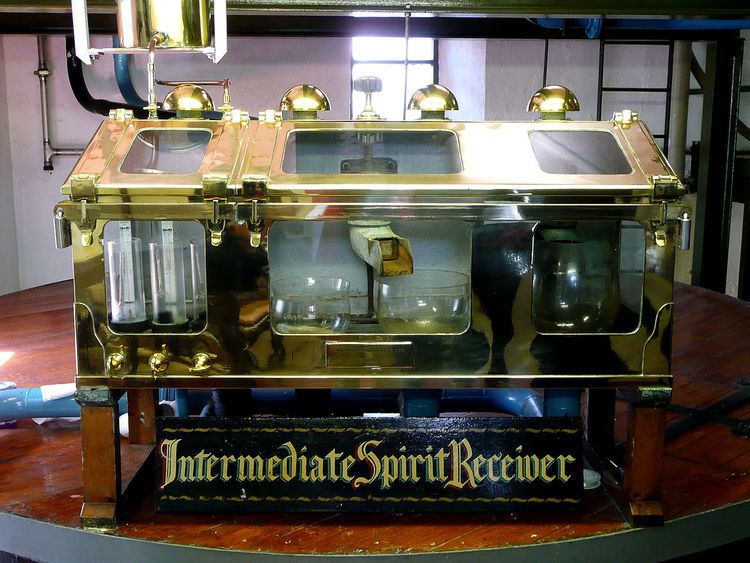 | ||
A spirit safe is a large, padlocked, glass walled, usually brass bound container found at Scotch whisky distilleries which allows the distiller to analyse and manage the spirit coming out of the pot still without coming into contact with the spirit itself.
History
The origins of the spirit safe date back to 1823 when a change in the duty laws allowed small Highland distilleries to compete fairly with the much larger Lowland distilleries. The change brought a number of distillers, who had previously operated illegally, within the law.
These laws were rigorously enforced and one of the main ways of enforcement was the spirit safe which prevented anyone siphoning off the newly made spirit to avoid paying duty on it at the point in the whisky-making process it was most vulnerable, just as the spirit came out the stills before the quantity had been measured.
This is why spirit safes carry large, obvious padlocks, and why all the manipulation and measurement takes place behind its glass panels, using controls on the front of the spirit safe. Until 1983 only the local officer from the Customs and Excise, who measured how much spirit was produced, had access to the keys for the safe. Since then the keys have been held by the distillery manager as well as Customs and Excise to ensure compliance by analysing the returns from a range of distilleries.
The first liquid to emerge from the spirit condenser as the spirit still is heated is the undesirable foreshots, and these are directed from the spirit safe to the low wines and feints receiver for re-distillation. But gradually the undesirable methyl alcohol content reduces and what emerges is the spirit that will end up as whisky. The distiller has to judge the right moment to redirect the flow of product to the spirit receiver instead of the low wines receiver. This is when the alcohol content, measured by a hydrometer in the spirit safe, falls to 75%, or when the emerging spirit no longer turns water cloudy, another test conducted remotely inside the spirit safe.
The alcohol content of the emerging liquid continues gradually to fall during the run. When it reaches a point between 70% and 60% alcohol by volume, again as measured by a hydrometer within the spirit safe, the flow is switched away from the spirit receiver and back to the low wines and feints receiver, again for re-distillation. The precise point at which this switch takes place depends on the character of the whisky being produced, but for a particular whisky this will always happen at the same point in the run.
